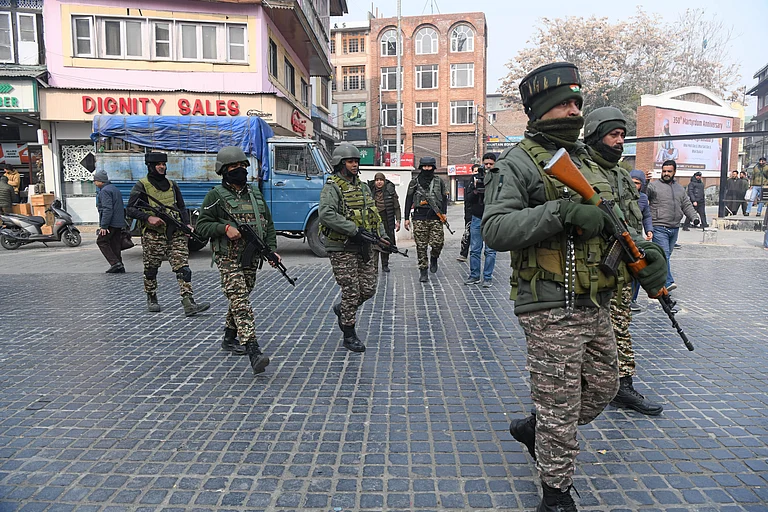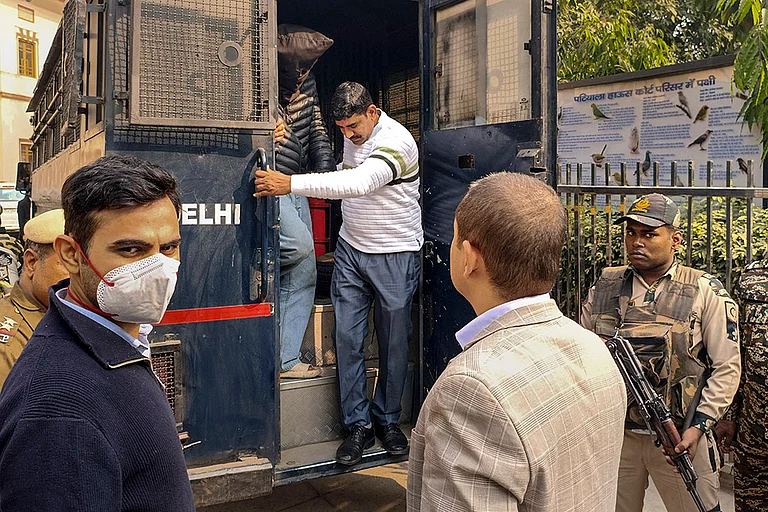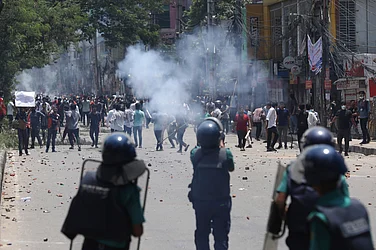As they went about collecting trash, including polythene bags and soft drink bottles, the young men drew the attention of onlookers. Some bystanders suggested they start by cleaning the riverbank first, pointing out the litter scattered along the shores. The young men, however, remained focused and undeterred, continuing their work as they had for many years.
This group of friends has committed to keeping Aru Valley in Pahalgam clean. They collect trash in the valley and then dispatch it to the Municipal Authority in Pahalgam, about 12 km away. “If we had a mechanism here, we would process this trash ourselves,” says Shahid Hussain Wani, a trained actor who also works in tourism. They dedicate around three days a month to this task.
"We do this to keep our area clean and ensure tourists don’t complain about littering," Wani adds. As Wani and his friends were working on Sunday, people even handed them empty Coke bottles and polythene bags.
In Kashmiri, Pahalgam means "village of shepherds." Standing at an elevation of 8,990 feet, it is one of the most beautiful places in Kashmir and has been a favourite location for Bollywood since the 1950s. It is one of two top tourist destinations in Kashmir, the other being Gulmarg. However, as time has passed, shepherds have become a rare sight, hotels have come everywhere and pine trees are seeing burnt marks.
After leaving the overcrowded Pahalgam, a scenic paved road leads to the tranquil Aru Valley. Once a quiet village settled among mighty mountains with the Lidder River flowing through it, Aru has transformed into a popular tourist spot. Hotels now dot the landscape, and a constant influx of visitors has become the norm. This surge in tourism has created employment opportunities for locals as tourist guides and has helped the local economy.
Located just 12 km from Pahalgam, the Valley also serves as a gateway to numerous trekking routes, including the Kolahoi Glacier Trek. Several trekking groups arrive every week for the Kolahoi Glacier expedition.
The Kolahoi Glacier, Kashmir’s largest, is rapidly receding, posing a significant environmental threat. Situated 26 km north of Pahalgam, it is a crucial source for Lidder, a major tributary of the river Jhelum. Named after the Kolahoi peak, the glacier lies at an average altitude of 4700 meters. Over the years, there has been seen decrease in its thickness, with rocks and crevasses becoming more prominent. Wani, a seasoned trekker and mountaineer, says he and his friends have observed first-hand that the glacier is retreating. He, however, says trekkers usually don’t leave trash behind.

Despite the surge in tourism, Wani and others are steadfast in their commitment to preserving the environment of Aru Valley "without causing inconvenience to anyone." They have formed a dedicated group focused on keeping the valley clean, although they have opted not to formalise it as an NGO. They, hailing from diverse backgrounds, share a unified goal: safeguarding the natural beauty of Aru Valley for future generations.
Like Betab Valley, named after the Bollywood movie "Betaab" filmed there, Aru Valley has been extensively featured in Bollywood, serving as the primary location for the blockbuster "Haider."
With the increase in tourist arrivals, however, the natural environment has come under strain. During the peak season, Pahalgam welcomes thousands of visitors daily. Although the exact amount of waste in the area is not quantified, its visible presence fuels environmental concerns.
The area lacks dustbins, the public washrooms are closed, and restaurants have inadequate waste disposal facilities. Noise pollution and overcrowding have become significant issues due to unplanned growth. However, Wani and his friends refuse to talk about these problems and they say they are focusing on their mission to clean up the area. “We will do it at any cost,” he adds.
Leading the initiative, Wani and his friend Subzar Rather, a philosophy student, began collecting trash from Aru in 2019. Gradually, others joined, turning it into a movement.
Initially, their efforts faced criticism from friends and family. "They would say, what kind of work have you started?" Wani says.
"We live near Pahalgam and Mandlen villages. Our livelihoods would be impacted if we don't keep it clean; tourists won't come if there is too much trash around," he says, noting that some tourists have posted videos complaining about the litter. “We don’t want this to be repeated,” he says.


























